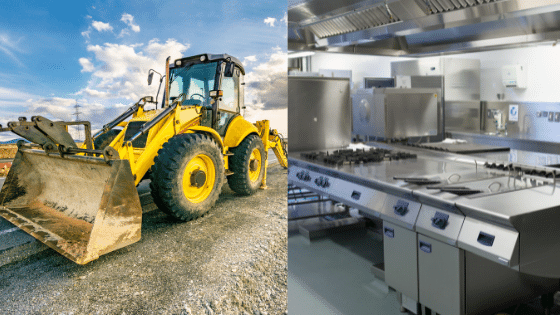
More elastic than rubber and 1,000 times stronger than iron, steel gets used in almost every industry. It’s one of the world’s most environmentally friendly materials because it’s easy to recycle and lasts practically forever.
Essentially an iron alloy, steel is at least 3,000 years old, and blacksmiths worked in steel as early as the 13th century. Today, the steel industry employs more than two million people and fuels a $290 billion sector of global business.
Steel comes in two basic types — carbon and stainless.
Kloeckner Metals is a full-line stainless steel supplier and service center. Download our stainless steel spec sheet and check what Kloeckner Metals routinely stocks.
Most of the steel produced throughout the world is carbon steel.
Like all steel, carbon steel is a metal composed of iron and carbon. Carbon steel may also contain other alloys such as chromium, silicon, nickel, or vanadium; but these additives are uncommon.
The American Iron and Steel Institute defines carbon steel as “Steel that has properties made up mostly of the element carbon and which relies on the carbon content for structure.”
Typically, the carbon component makes up between .12 and 2 percent of the alloy, and the remaining non-ferrous ingredients do not total more than 10.5 percent of the product.
The higher the carbon content, the denser and more brittle the steel. An alloy with lower carbon content, though, offers a tougher, more flexible metal.
But there’s more to it than that. Adding additional compounds like nickel or chromium increases the steel’s corrosion resistance and adds toughness and durability to the product.
Carbon steel comes in three grades — low-carbon, medium-carbon, and high-carbon. Each grade of steel is progressively stronger and more expensive.
Most manufacturers use low-carbon steel because it’s more malleable and easier to weld than higher-carbon alloys. Products made with it retain their shape well despite the force of insults they experience.
In general, carbon steel is solid and resistant to abrasion.
Grades of steel that contain more than 10 percent chromium — with or without other alloying elements — are called stainless steel. This form of steel is popular among manufacturers because the chromium reacts with oxygen to create a protective layer that resists corrosion. Consequently, stainless steel makes a reasonable option for items to be used in wet environments.
Stainless steel also holds its strength even when exposed to high temperatures. This metal alloy can withstand temperatures of up to 1700° F for lower grade and up to 2100° F for the high-temperature stainless grade.
Stainless steel comes in five common grades:
Simply put, carbon steel contains less than 10.5 percent chromium, and stainless steel contains more than 10.5 percent chromium. The chart below details the chemical breakdown of carbon and stainless steel.
Carbon Steel |
Stainless Steel |
| Low chromium levels | High chromium levels |
| Carbon makes up 2-2.5% of the alloy | The lower the chromium content, the less durable and the cheaper the steel |
| Usually just a carbon-iron alloy with few, if any other metals | May contain nickel or other metals |
The mechanical properties of steel vary based on the alloy’s carbon content. The chart below provides a general representation of the relative merits of each kind of steel.
Carbon Steel |
Stainless Steel |
| Wear-resistant and durable | High tensile strength |
| Susceptible to rust and corrosion | Resistant to high and low temperatures |
| Environmentally friendly and recyclable | Environmentally friendly and recyclable |
| Wear resistant | Matte finish; more attractive appearance |
| Less expensive than stainless steel | Higher cost and harder to make |
While technically possible, stainless steel and carbon steel rarely get welded together because the two metals have different levels of electrical conductivity.
Carbon steel gets used in a variety of industries and sectors depending on the grade of the steel. Although used in automobiles since the 1930s, stainless steel mostly goes into products for the medical technology, architecture, and food and beverage industries.
When considering whether to go with carbon steel vs stainless steel, look at your needs and your budget. For help selecting the right kind of steel for your project, contact an expert at Kloeckner.
Kloeckner Metals is a full-line metals supplier and service center. Kloeckner combines a national footprint with the latest fabrication and processing technologies and most innovative customer service solutions.

Steel base plates are fundamental elements employed in various manufacturing...
Metal fabrication is a critical process that transforms raw metal...
The solar industry has undergone a significant transformation by incorporating...

X
The Kloeckner Metals website uses modern technologies. Unfortunately, your browser doesn't support those technologies.
Download the latest version of one of these browsers to experience the site: